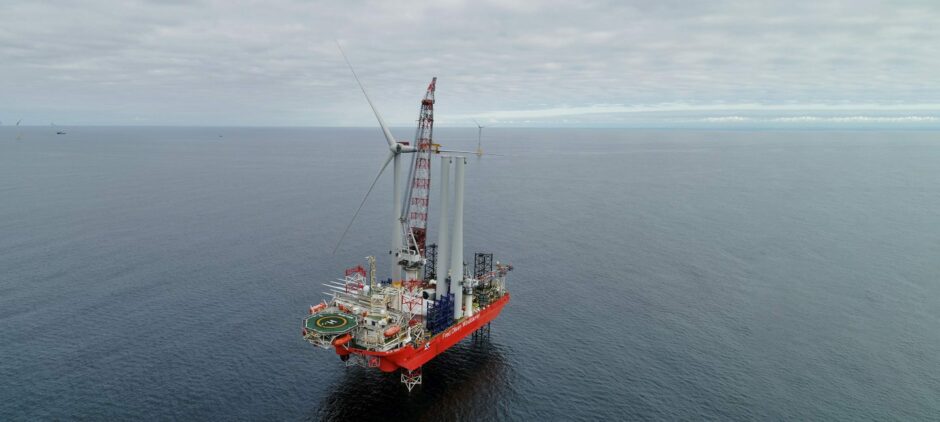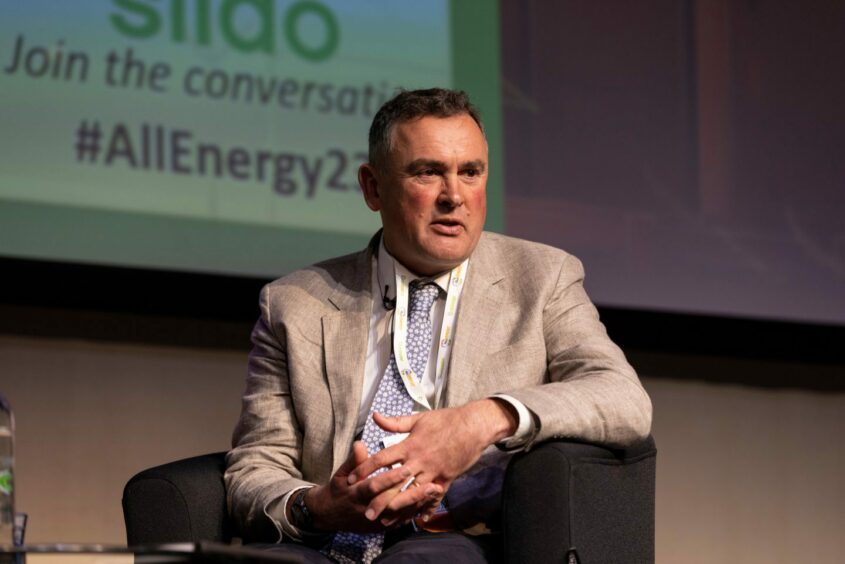
A major transformation of the offshore wind industry needs to happen if the UK is going to get close to its deployment goals.
Adam Morrison of Ocean Winds laid bare the stark reality for the sector and government during an Offshore Energies UK (OEUK) event in Aberdeen.
He says a “sea change” is required if developers are to cut the time it takes to plan, build and commission an offshore wind farm.
That includes reforms to planning, consenting and grid connections – all three have previously been identified as barriers by industry.
‘Didn’t feel like we were going slowly’
Ocean Winds is behind the 100-turbine Moray East development, located in the Moray Firth and one point Scotland’s largest offshore wind farm.
An agreement for the site was secure by the form – a joint venture between France’s Engie and Spain’s EDP Renewables – in 2012, with the wind farm only reaching full power last year.
“At no point in its development did it ever feel like things were going slowly; I would say it felt like we were going at breakneck speed at all times to get into operations about 12 years after being awarded the site,” Mr Morrison told attendees.
He said: “The scale of change needed, in terms of the pace in which we deliver these projects, is enormous. We need a complete sea change – 12 year development timelines are too long in the context of what needs to be delivered, not only for our net zero targets but also for the supply chain to benefit.”
Ground to make up to meet targets
Westminster raised the UK’s 2030 offshore wind target in April 2022 to 50 gigawatts (GW) as part of its strategy for bolstering energy security.
For context there is about 14 GW worth of turbines currently spinning in waters off England, Scotland and Wales, and the industry is up against it to deliver on government ambitions.
Indeed the UK’s offshore wind champion, Tim Pick, told the OEUK event that he expects the 50 GW target to be missed, a prediction that has been made by other green energy bigwigs.
He said: “There’s this phrase from Spiderman: with great offshore wind power comes great responsibility. We need to recognise that as wind becomes fundamental to the system, more and more responsibility is going to be placed on the sector.
“In my view we’re not going to hit the 50 GW target, and certainly not the Labour party’s 60 GW target. We will hit about 40 GW by the end of this decade, which is an unbelievable achievement.
“The target was only 30 GW back in 2019 so we shouldn’t be too negative about not hitting these targets; they’re deliberately stretched ambitions.”
Recommended for you


 © Supplied by Ocean Winds
© Supplied by Ocean Winds © Supplied by All-Energy
© Supplied by All-Energy